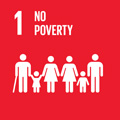- Docente: Giovanni Prarolo
- Credits: 4
- SSD: SECS-P/02
- Language: English
- Teaching Mode: Traditional lectures
- Campus: Rimini
- Corso: First cycle degree programme (L) in Economics of Tourism (cod. 8847)
-
from Apr 10, 2025 to May 20, 2025
Learning outcomes
Students will first gain a solid understanding of geolocation technology principles, laying the groundwork for practical application. Moving forward, students will acquire essential GIS skills, enabling them to conduct spatial analysis and create maps effectively. Throughout the course, they will demonstrate proficiency in collecting, manipulating, and interpreting geospatial data, fostering competence in real-world data handling in the context of economic decisions. Furthermore, students will apply geospatial analysis techniques to make informed decisions, enhancing their problem-solving abilities. The course will provide a holistic understanding of spatial data tools and their versatile applications across various economic domains. Students will showcase their competence by addressing real-world challenges using geospatial technology, bridging theory and practice. Critical thinking will be emphasized, empowering students to approach spatial problems systematically and derive meaningful insights.
Course contents
Introduction to Spatial Data
"Seeing" Data
The nature of Spatial Data
Why Spatial Data in Economics? Examples
Spatial Data Tools for Economists: ready-made solutions (DataWrapper, Tableau, etc.)
Introduction to GIS: theory and application with GIS
Using GIS: the environment, coordinate systems and data
Using GIS: georeferencing, creating data, calculating distances, overlay, etc.
Readings/Bibliography
A bibliography with full references will be distributed in class.
Reference handbook and additional slides for the use of GIS will by provided by the instructor. Additional material (data/codes/etc.) will be distributed through Virtuale.
Teaching methods
Theoretical and applied lectures held in class and in the Lab, using GIS open-source tools.
Reading and discussion of research articles and real-life cases.
Assessment methods
At least 50% of the evaluation will be based on a final written exam.
The rest of the evaluation will be based on take-home problem-sets and projects.
The maximum possible score is 30 cum laude. The grade is graduated as follows:
<18: failed
18-23: sufficient
24-27: good
28-30: very good
30 cum laude: excellent
Teaching tools
Slides and other materials distributed in class.
Office hours
See the website of Giovanni Prarolo
SDGs




This teaching activity contributes to the achievement of the Sustainable Development Goals of the UN 2030 Agenda.
